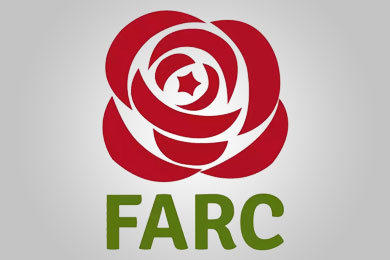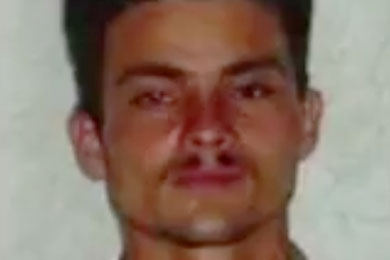Colombia’s former FARC guerrilla group has essentially split into three different categories: the party, the dissidents and the rearmed guerrillas.
The FARC party and the demobilized members loyal to their former commanders are by far the most significant group.
The original dissidents and “the new guerrilla group” are considerably less powerful, but because they are armed and could unite, they pose the biggest challenge to the peace process and peace in Colombia in general.
FARC #1: The party

Despite the major difficulties that have arisen in the peace process, the FARC leaders that now make up the political leadership continue to count on the loyalty of the vast majority of the group’s former fighters.
According to the UN, 3,100 former FARC fighters and their families are currently living in the 24 reintegration sites that were erected after the 2016 peace deals.
Another 8,000 registered FARC members are living outside these camps and taking part in the peace process. These former guerrillas and militia members are most vulnerable to violence and recruitment.
FARC #2: The dissidents
Before the FARC signed peace, six of the FARC’s approximately 60 fronts dissented and were expelled from the organization.
Five of these groups belonged to the now-defunct Eastern Bloc of the FARC and quickly joined forces. While operating independently, former FARC commanders “Ivan Mordisco” and “Gentil Duarte” have emerged as these groups’ most influential leaders.
These dissidents have maintained control over abandoned FARC territory and criminal rackets, which has allowed them to maintain their original military strength to a certain extent.
These groups have been a destabilizing force since the beginning, especially in the east and the southeast of the country. These groups continue to call themselves FARC-EP, but have abandoned political ambitions and have generally become an organized crime group.
The 64th Front from Cauca also refused to demobilize, but is no longer using their original name.
The dissidents have been trying to recruit their former guerrilla buddies and a new generation of fighters from day one of the peace process with relative success. They are, however, opposed by some groups that want to remain autonomous.
FARC #3: The rearmed guerrillas
Since 2017, FARC members who had little confidence in the process to begin with or lost confidence in the course of the process have rearmed, sometimes trying to reorganize the front they used to belong to.
The April 2018 arrest of “Jesus Santrich” on apparently bogus drug trafficking charges boosted the rearmament of guerrillas.
Some of the approximately 2,000 guerrillas who abandoned the peace process have formed their own groups or have aligned with the original FARC dissidents.
The announcement in August of Santrich and “Ivan Marquez” that they were forming “the new guerrilla group” sought to unite these groups and reorganize the FARC’s former national organization.
This is more difficult than it sounds though and they may be too late.
First of all, Mordisco and Duarte have been actively incorporating rearming former FARC guerrillas. So far, the original dissident leaders have had no interest in submitting to their former bosses and have shown no interest in politics. In fact, the original dissidents and the new FARC are rivals.
Additionally, groups like the ELN and AGC have taken control of many criminal rackets that used to finance the FARC, which has made it difficult for all rearming guerrillas to regain power in the regions where they used to reign.
So far, only the 18th front, which rearmed in late 2017 and is active in the north of Antioquia, has pledged allegiance to Marquez and his group.
The success of Marquez and Santrich depends entirely on the failures of the government to implement the peace deal.
The killing of demobilized FARC members and the government’s failures to address the root causes of the armed conflict, could change the FARC’s demobilized guerrillas’ mind and convince a new generation to take up arms.



